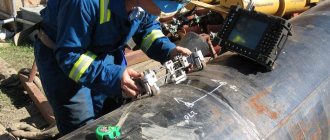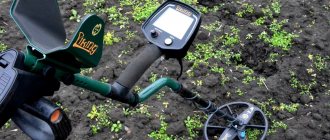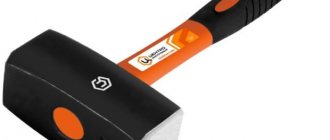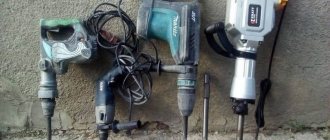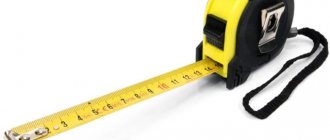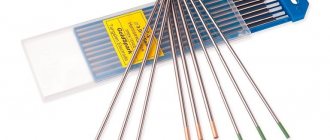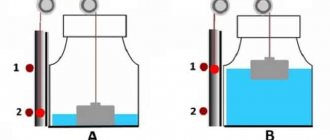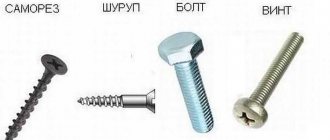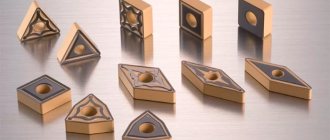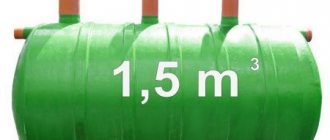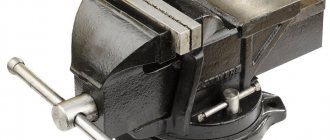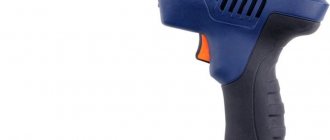Principle of operation
Laser measuring instruments use two principles in their work - pulse and phase.
The first rangefinder consists of two components - a laser and a detector. By measuring the time it takes the laser beam to travel along the path from the source to the reflecting object, you can calculate the exact distance between them. These devices are used to work over long distances. The operating technology is as follows: the laser generates a powerful pulse and turns off. This property allows it to be used covertly. This property is the decisive factor determining the use of this device by the military.
The second type, phase, works according to the following principle. The laser turns on for a while and directs the beam to a distant object, it (the beam) has a different simulated frequency and the distance to the object is calculated from the phase change. Phase measuring distances do not have instruments for measuring the reflected signal. These devices are effective at distances of up to 1 kilometer and therefore are used for domestic needs or as sighting devices for small arms.
Scheme of operation of a laser rangefinder
A laser rangefinder, used in everyday life and in construction, is essentially a mixture of a calculator and a tape measure. Meanwhile, such a device has a number of undeniable advantages:
- This device provides the ability to measure linear dimensions (length, height, width), while the built-in calculator will automatically calculate the perimeter. In addition, the calculating device will help determine the volume of the room;
- The rangefinder is equipped with the ability to store received data in internal memory. They can be used to carry out calculations;
- The device allows you to measure distances at remote distances with someone’s help; by the way, measurements can be taken both in indoor and outdoor areas, in different weather conditions.
How to use a tool outdoors?
For ease of use, the rangefinder can be mounted on a tripod.
Still, in most cases, the rangefinder is used on the outside of buildings. Therefore, to ensure maximum accuracy of readings, you can use the following recommendations:
- For such work, it is necessary to use those devices that have an operating range of 150-200 m, that is, for long distances.
- A target should be used. Most standard kits already have it.
- To ensure accurate readings, a tripod should be used. If this part is purchased separately, then the rangefinder must have a special socket on the bottom side.
Many rangefinder models have a bracket located at the back. It can be installed at a 90-degree or 180-degree angle. If its position is perpendicular, then the device measures the distance flush with the edge or outer corner.
This allows you to know the diagonal size of the room. In this case, the reference point is set manually; it starts from the back or front wall of the bracket. But some models are equipped with an automatic zero point transfer function.
Peculiarities
When working with a laser rangefinder, it is advisable to take into account some features of working with this device.
Rangefinders have the ability to take measurements at different distances and with a certain error. Thus, the maximum distance can range from 60 to 200 meters, with an error of 5 cm. These data are indicated in the product passport. Most rangefinder models operate within the range from – 10 to + 50 degrees.
When operating the device outdoors, you must remember that weather conditions play an important role. Performance may be reduced in both poor and sunny weather.
Key Features
When taking measurements, it is necessary to eliminate obstacles that may arise between the device and the object, this could be foliage, glass, etc.
The practice of using laser measuring instruments has led to the emergence of certain operating rules. For example, the measurement result will be distorted if the beam is directed at a highly reflective surface (mirror, foil). The result will not be entirely correct if the beam is directed at an object with low reflectivity (tar paper).
To obtain extremely accurate results, use a special device with a reflective surface.
During operation, it is necessary to constantly monitor the condition of the batteries. Weak current sources also negatively affect measurement results.
It is advisable to use a tripod when taking measurements. In this case, the measurement accuracy will be increased.
Selection options
The first parameter that will help you decide which rangefinder is best suited for a specific request is the maximum range. Then you need to pay attention to the power of the microprocessor, which determines the speed and functional characteristics of the device.
The measurement accuracy of laser rangefinders ranges from 1-1.5 mm, and is not a decisive indicator of choice. Errors in measurements can also be caused by external factors, which are eliminated by additional measures, for example, installing targets to correct specific surfaces with increased absorbing or reflecting effects.
Glasses with light filters and models designed for various weather conditions can solve professional problems of any complexity. The price class depends on the set of options, configuration features and the authority of the manufacturer.
How to use a laser tape measure
Using a laser rangefinder in practice is a fairly simple task. To perform a measurement, it is enough to set it at the starting point, point it at the object to which it is necessary to measure and activate the device. It must be remembered that to increase accuracy it is advisable to use a tripod, this is especially true when measuring large quantities.
How to use a laser tape measure
That is, measurements can be carried out, perhaps even by one person without the involvement of assistants.
Rangefinder design
The operation of laser roulette is based on infrared waves. A wave directed towards some object or obstacle allows you to get an instant result
The design is as follows:
- The plastic casing of the roulette contains: an “on/off” button - turn it on/off;
- monitor;
- emitter;
- reflector;
- processor (microscopic);
- tripod
- glasses (anti-fog lenses)
- software;
- spirit level
For the rangefinder to work, you need 1.5 V, type AA batteries. This economical power source ensures continuous operation for a sufficiently long period.
Terms of use
When working with such devices, certain rules must be followed. Thus, it is strictly unacceptable to direct the laser beam towards a person. Getting it into the eyes can lead to irreparable consequences, including loss of vision.
Taking measurements in bright sunlight can be difficult because the laser marker may be difficult to see. In this case, it is necessary to use special glasses through which it will be immediately visible.
Laser photography on location
When taking measurements outdoors, especially over long distances, it is necessary to use a plate called a visor.
Which rangefinder is better and how to choose it?
The choice of a rangefinder is based on the tasks it must perform, as well as on its technical characteristics:
• Class.
A professional tool is used when working with complex objects under severe operating conditions, while for simple tasks, such as cosmetic repairs, a household option is suitable.
• Measurement range.
Some modern laser models are capable of measuring distances up to 200 m.
For home renovations or small construction sites, 20 - 50 m will be sufficient.
• Accuracy.
Most devices have an error not exceeding 2 mm, which is quite enough for many household and even professional construction work.
• Guarantee.
As a rule, manufacturers provide a warranty of 1–2 years for household rangefinders, and 2–3 years for professional rangefinders.
Before purchasing, you should check to see if there are appropriate service centers nearby.
• Ergonomics.
The device should fit comfortably in the hand, be light in weight and not slip out during operation.
The more compact the tool, the more convenient it is to use.
The device of a compact laser construction rangefinder
Despite its apparent simplicity, a laser ruler is a complex engineering device. The laser rangefinder device consists of the following components:
Scheme of laser rangefinder operation
- Emitter - it generates a beam and sends it to the desired point.
- Reflector - it is necessary to receive the beam reflected from the object.
- Microprocessor to perform the necessary calculations.
- A pre-installed program necessary for processing the data obtained during measurements.
- A sight that allows you to direct the beam to the desired location.
- A level with which the device can be strictly aligned in a horizontal or vertical plane.
Bubble level device
The bubble level, as a rule, consists of a load-bearing crossbar into which control and auxiliary elements are built-in, and these can be:
- ampoules (flasks) with an air bubble, the position of which depends on the inclination of the surface;
- measuring scale, for the possibility of using the level as a measuring tool;
- anti-slip pads;
- marking elements for professional needs;
- movable peephole with graduation, allowing you to set the angle of inclination;
- periscope, reflecting the position of the bubble to the other side of the level, if it is impossible to control it from the side;
- equipping the level with a laser transforms it into the category of a laser instrument, although the control element there remains the same bubble in the flask;
- additional flasks (3, 4, 5…..);
- level goniometer with movable bar and protractor;
- anti-shock elastic elements, etc.
Level control options
There are levels with the ability to adjust the position of the flask, equipped with adjustment screws on the sides of the flask.
From the outside, only the countersunk heads of the adjusting screws with slots are visible, and inside the body, hidden beneath them are springs that hold the flask and can be adjusted.
Additional functions
The microelectronics used in laser rangefinders allows not only direct measurements. Many devices of this type have some additional functions, which include:
- Continuous measurement function. When operating in normal mode, the rangefinder, when you press a button on the remote control, records the result and displays it on the monitor. But quite often, there is a need to constantly measure the distance, for example, from a wall to a future partition. To do this, the device is switched to continuous measurement mode. In this mode of operation, the device independently takes measurements at a certain frequency and displays their results on the monitor. The measurement takes place in real time.
- Determination of the greatest and smallest distance. This function is useful when determining the diagonal in a room. The fact is that it is not so easy to measure it and you can simply miss when directing the laser beam and, as a result, inaccurate results will be obtained. After setting the minimum distance on the device, it will record only those measurements that are greater than the set one.
Types of rangefinders, their capabilities and price
All rangefinders, based on their operating principle, are divided into two large classes: active and passive.
Devices of the first group determine the distance based on measurements of the travel time of a signal reflected from an obstacle between the emitter and the receiver, with a known speed of its propagation.
Passive options measure distance by calculating the height of an isosceles triangle, given a known base (the distance between rangefinder objects) or the opposite acute angle.
The following devices belong to the active category:
Sound
The device operates on the basis of a magnetostrictive or piezoelectric transducer.
An ultrasonic device calculates the distance given the known speed of propagation of an electromagnetic wave in a specific environment. For air approximately 340 m/s.
Light
Based on the principle of operation, a distinction is made between phase and pulse rangefinders.
Laser
The most popular option in construction and household use.
The simplest roulettes - rangefinders - will cost the buyer 2 - 3 thousand rubles, and a professional tool often costs more than 50 thousand rubles.
• Other.
The passive category includes:
Optical rangefinders
Measuring distance using optical parallax. A striking example is a rangefinder camera.
• Performs object-to-sample measurements, such as a thread rangefinder.
• Other.
According to their purpose, devices are divided into many subtypes, most of which are easy to find on the open market:
Military
Usually a heavy, dimensional infrared device capable of taking into account the azimuth, inclination angle, length or height of the target.
Some hand-held IR rangefinders are capable of operating at distances of up to 25 km, while more powerful ones have a stationary layout, mounted on a platform or tripod, and are equipped with modules with daytime observation equipment, night vision devices, and thermal devices.
Geodesic
In most cases this is an optical filament rangefinder. Price – from 3 thousand rubles.
There are also models with additional functions that are noticeably more expensive.
Industrial
As a rule, an optical electronic device designed to work with white objects.
Cost – from 100 thousand rubles.
For hunting
The variety of models and layouts is truly impressive, and most of them are built-in modules of various optical equipment.
Among them are a sight with a rangefinder, which has passed into civilian use as a military development, and night vision binoculars with a rangefinder.
For ease of pointing, stand-alone laser devices have a viewfinder with a magnification of 6 times or more.
Cost – from 10 thousand rubles.
For fishing
Basically it is a lightweight and compact monocular rangefinder, often combined with a night vision device.
Price – from 6 thousand rubles.
Building
A compact laser device, often called a laser tape measure.
There are both household and professional models with advanced functionality, for example, with a built-in protractor.
Powered by several AA batteries.
Often, a laser rangefinder with an electronic level used in construction is capable of measuring distances up to 30 - 40 m.
When taking measurements in bright natural light, the laser beam is practically invisible at long distances, which means that aiming at a specific point is difficult.
The situation is saved by a rangefinder with a camera, which displays an image on the device’s display.
A device with a video camera allows you to accurately point the laser beam at the required point due to the crosshairs displayed on the screen, as if on a sight.
Cost – from 2.5 thousand rubles.
Smartphone applications
A separate category includes special applications installed on Android.
Such software is not suitable for high-precision measurements, but decimeter accuracy is quite sufficient for, for example, tourist needs.
The program on the phone performs trigonometric calculations at a known angle of inclination and height of the smartphone above the ground.
For example, if you measure the height from the floor to the shoulder, and then enter this indicator into the appropriate line of the Android software, it will be enough to hold the device at shoulder level each time.
The built-in sensor in the smartphone is responsible for determining the angle of inclination.
Chinese rangefinders perform excellent functions of electronic roulette in everyday life.
Among the models there are decent ones, capable of taking measurements with high accuracy, and, moreover, equipped with additions comparable to professional instruments.
A rangefinder from China, with similar characteristics, will cost much less than analogues produced by famous brands.
For golf
In addition to the models listed above, there are golf rangefinders.
Such devices have additional functions necessary when playing golf.
Their cost on average ranges from 15,000 – 50,000 rubles, depending on the brand and functionality.
Laser rangefinders for work indoors or at short distances
All rangefinders can be divided into two large groups. Some are used for internal work, others for external work. The measurement range of rangefinders that are intended for indoor measurements usually does not exceed 100 meters.
Laser rangefinder for indoor use
For such work, rangefinders that use both operating principles can be used.
Operating principle
Based on the principle of operation, laser rangefinders are divided into 2 large categories: pulse and phase. These features determine the area of use of the devices.
Pulse
The circuit implementation of such devices is the simplest. The operation is based on the detection principle used in radar. A short radio pulse is sent to the object, after which the device receives the reflected signal back.
Expert opinion
Torsunov Pavel Maksimovich
The peculiarity of laser pulse rangefinders is that a laser is used instead of a radiation source. This allows you to increase the accuracy of measurements and location of an object. However, in this case the angular divergence suffers and the influence of atmospheric noise on the signal increases.
Pulse rangefinders are usually used when it is necessary to accurately measure long distances (100 km or more).
Areas of application are:
- Navigation.
- Geodesy.
- Warfare.
- Astronomy, etc.
To determine the parameters of an object less than 80 km away, pulse devices must be equipped with expensive elements (specialized microcircuits, programmable logic integrated circuits).
Phase
Due to the absence of expensive components (FPGAs, ultra-precise timers), they cost significantly less than pulsed models.
During operation, rangefinders constantly emit a signal whose frequency does not exceed 500 MHz. The wave has a constant length (500-1100 nanometers). The photodetector receives the pulse reflected from the object. The distance is determined by calculating the difference between the initial and final phases of the signal. Such devices provide high measurement accuracy at an object distance of no more than 1 km.
The areas of application of such devices are determined by their ability to make accurate measurements over short distances:
- Construction.
- Some types of geodetic work.
- Scanners.
- Robotics, etc.
Expert opinion
Torsunov Pavel Maksimovich
In everyday life, phase rangefinders are usually used. Also in construction, their variety is widely used - laser tape measure.
What to look for when choosing a laser rangefinder
There are many models of laser rangefinders on the market, and often the consumer can simply get confused by the abundance of offers. Therefore, the consumer, when choosing a laser rangefinder, can be guided by certain criteria, including the following:
- For indoor work, a device that can measure angles and have functions, for example, calculating the perimeter, is sufficient. Tape measures of this class have a small measurement range of approximately 100 meters.
- For work in open spaces, more expensive models are used. They are equipped with a wide range of functions, in particular, they can measure minimum and maximum measurements. In addition, they are equipped with sights and means of connecting to a computer.
- For outdoor work, devices must be used in protected housings and have cases designed for transportation.
- Of course, the cost of the product plays an important role. Thus, devices designed for indoor use are slightly cheaper than those designed for outdoor use.
- Of course, we cannot ignore the question of which company produced the product. Devices produced by Makita, Bosch, Hilti and some others are in stable demand. By the way, when purchasing such a device, it is advisable to check the availability of documents confirming the quality and safety of these devices. The fact is that the popularity of such devices has led to the fact that there are a large number of low-quality devices on the market.
Dependence of technology on conditions
The rangefinder has two functional units: an emitter, which contains a laser diode, and a receiver. Due to the electromagnetic wave, a laser beam is generated. The wave itself is produced by the rangefinder, then it is reflected from the working plane, be it floors, walls, ceiling or another working side of the object. After this, it is returned to the receiver. Each wave has its own amplitude and length. The last indicator is initially known to the rangefinder calculator, so further calculations are made using the principle of adding all the wavelengths that have traveled to the object and back. After this, the given amount is divided in half. And if there is a “cut” wave, then its indicator is added.
Comparative characteristics of several laser rangefinder models.
The resulting figure is displayed on the device display. The measuring quantity, that is, meters or centimeters, is set according to personal requirements.
The rangefinder works well in closed spaces, since in this case the distances are small and there is no interference at all. As for nature, there are several factors that can create errors in work:
Sun. Often the color of lasers is red, so the brighter the surface, the less visible the end point
Why is this so important? Because the rangefinder must be able to process the signal, but it will be too weak, which can affect the accuracy of the readings. Therefore, at night, the laser rangefinder readings are more accurate
Environmental pollution
The best option is if the work is carried out outside the city, since the air there is clearer. In conditions of gas or fog, again there is a risk of errors. Reliability of rangefinder mounting. Manual measurements are always accompanied by inaccuracies. Therefore, it is better to use a special tripod for measurements. By the way, many modern devices already have such an element as standard. Working surface. If the measured plane has a dark color or a rough structure, the beam will be absorbed. Therefore, for such purposes, a light surface is used, which, due to its smoothness and color, helps to increase the reflectivity.
Device characteristics
Regardless of what additional options the laser rangefinder is equipped with, it has the following characteristics:
- Measurement range (shows the maximum distance at which the device can measure the parameters of an object with the accuracy declared by the manufacturer. For modern models, this figure reaches 100 m).
- Accuracy (permissible measurement error. Usually within 3mm).
- Nutrition . Usually carried out from AA or AAA elements (so-called “finger” or “pinky” batteries). Some models are powered by batteries or non-standard types of batteries, but it is better to choose a device with classic batteries, which can be easily found in the store.
- Weight . Modern compact rangefinders weigh up to 150 grams. Heavier models are inconvenient to use, especially if you have to work with the device constantly.
Additional functions
In addition to the main function (distance measurement), modern models can be equipped with options that allow them to solve many other problems: calculate volume and area, perform mathematical operations, etc.
The most popular add-ons are:
- Level (with its help you can determine the deviations of planes vertically and horizontally).
- Goniometer (together with the level allows you to make several measurements simultaneously).
- Protection from dust and moisture . Rangefinders are precision electronic devices. If dust or moisture gets inside, it may fail. Almost all modern models are equipped with protected cases. However, if you plan to operate the device in unfavorable conditions, it is recommended to choose an option with increased protection. Additionally, you can purchase a special case.
- Backlight . Even on expensive models with many additional options, you can sometimes find a monochrome display and a non-backlit keyboard. Such devices are not very convenient to use. It is better to choose a device with activated or constant backlighting and a color display.
- A rangefinder equipped with this function can be connected to a smartphone, tablet or laptop to save, analyze and transfer data. If you perform all these steps manually, the pace of work will decrease significantly.
